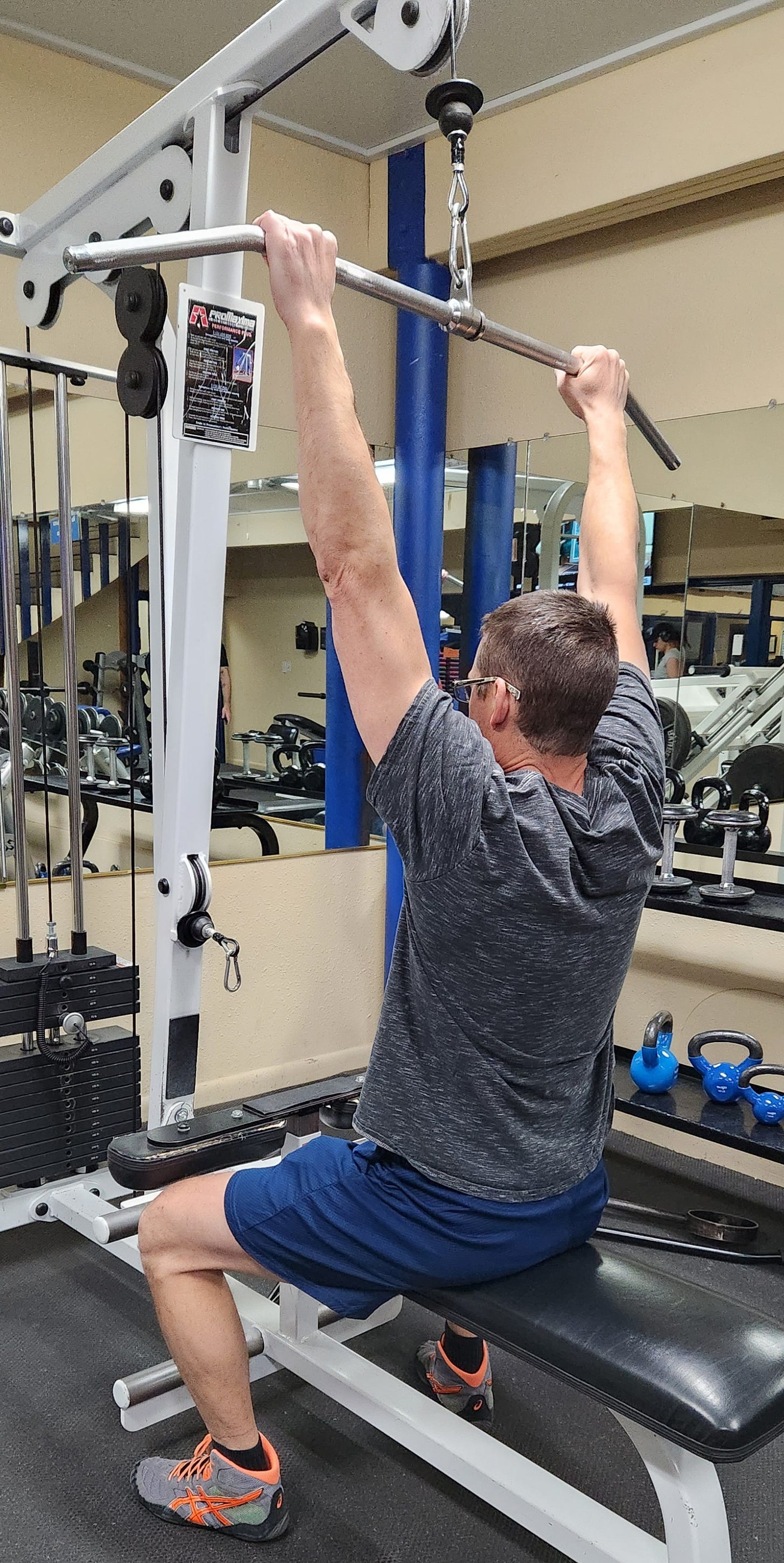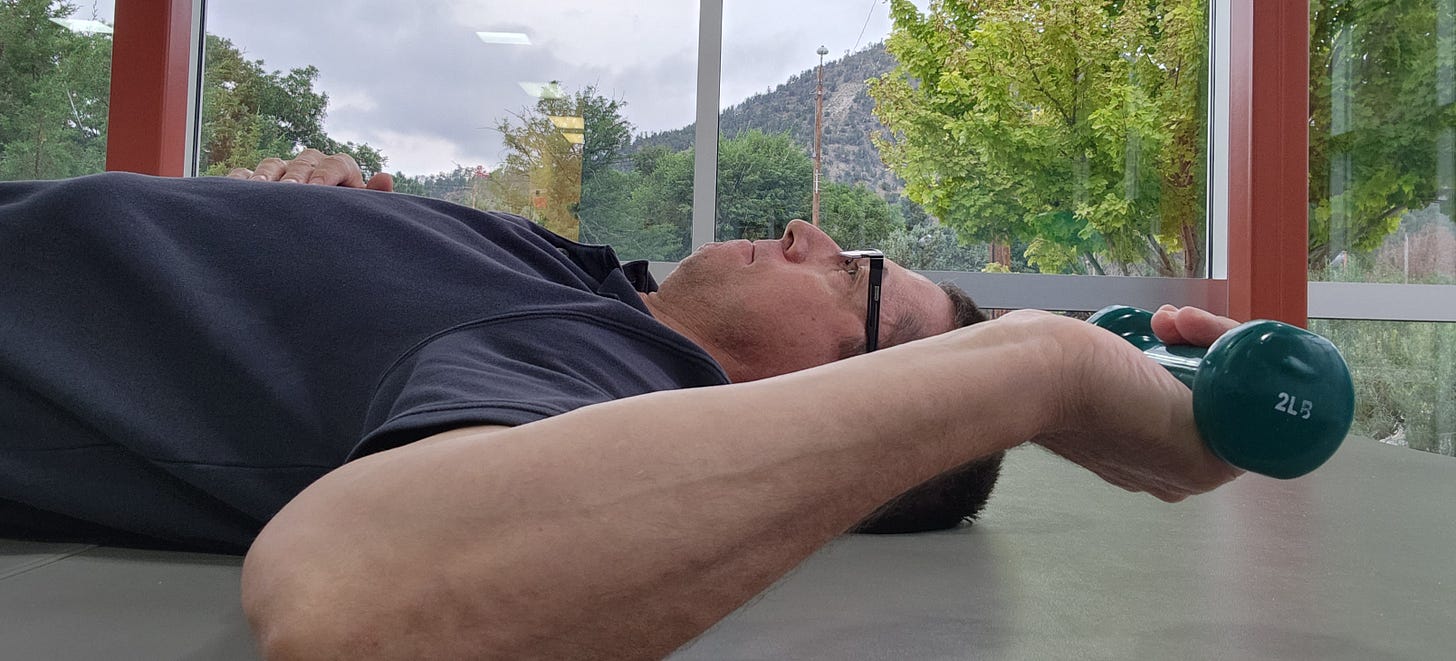Frozen shoulder
This is not medical advice.
People who have had surgery, fractures, osteoporosis, rotator cuff tears, labrum tears, etc. need in person guidance, and clearance for stretching from a doctor first before considering any stretching program.
I had my own bout of frozen shoulder, and it took about 3 months to make 90% of my progress. It was very painful while I was doing it ( it’s ok to cheer that a rehab person had a taste of their own medicine :)) but it felt better later. That was an important clue that I was cleared for aggressive stretching.
Frozen shoulder (adhesive capsulitis) is a condition where scar tissue starts to set in the shoulder joint (capsule), and limits motion. It can be because of an injury, or after surgery. There are also rumors in the industry that it “just happens.” In those cases I think there was an injury we were unaware of, or people don’t move their shoulders through its entire range of motion enough throughout the day.
In most cases, prevention is far easier and less painful than trying to fix it after the fact. If you have shoulder surgery, it is extremely important to follow the post op protocols on progressing range of motion and preventing what we call contracture of the joint.
In practice, I find that it doesn’t matter what range we start at, so long as another 5-10 degrees of progress is made every week, or at each visit. So long as the needle is moving, we are ok. Once range of motion stops improving, too much scar tissue will set in. Once that happens, people are unable to lift their arm overhead.
Measuring progress
Stretching frozen shoulder can be extremely painful. We are unlikely to push hard enough or long enough to make progress unless you have a goal. Progress needs to be measured to reach those goals.
The Stretches
There are usually 3 main stretches that need to be addressed. PT may address other joint mobilizations, however that is done in person.
An overhead stretch or flexion
I used to lay people down on a table for manual stretching. However I have now found the machine stretch to be more effective and less painful. The laying down stretch is a rotary motion, that frequently causes more impingement, and less actual stretching.
The seated machine stretch pictured, pulls in a linear motion, and hits more structures, including the rib cage, scapula, and more soft tissue attachments.
I started with as little as 20 pounds on tha bar, and gradually added weight as my tolerance improved.
Internal rotation or sleeper stretch
That’s the stretch pictured first in the article at the top. Ideally, you are lying completely on your side. The shoulder and elbow are at 90 degrees (I’m at about 80 degrees in the picture) and you should rest your head on a pillow to relax the neck muscles that attach to the shoulder.
External rotation stretch
There are some stretches in a doorway, but that never felt quite right for me. I felt a more relaxed and targeted stretch lying on my back with the weight. It was still very painful (applause!!) but effective.
The Big Picture
I cannot tell you what to do about your frozen shoulder, however I can relay my line of thinking with my situation.
I did not see a doctor, because I knew that regardless of what they found, the more range of motion my shoulder had, the better my function would be, and I’d have less pain in the future.
I did not want to have surgery, so I just went about stretching. I know that it’s also critical to measure my progress, otherwise there won’t be any. Stretching is too painful. If we don’t measure, we are not holding ourselves accountable.
Regardless of whether or not I had surgery, I still needed full range of motion.
I also knew that stretching was going to be far less force than the original injury, so I was unlikely to tear anything worse.
My protocol
I knew that stretching 3x/week was not going to make enough progress. I was stretching 2x/day. 6 overhead stretches at 10-30 seconds each, and 3 of 30 seconds each with the rotation stretches. Again, in my case, the stretching was very painful, yet felt better when I was done, and my sleeping improved dramatically within 2-4 weeks.
Every case is different. Consult with your doctor and therapist.








